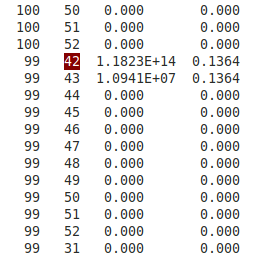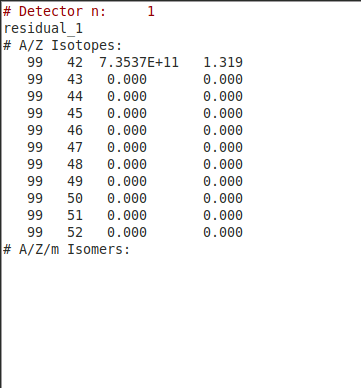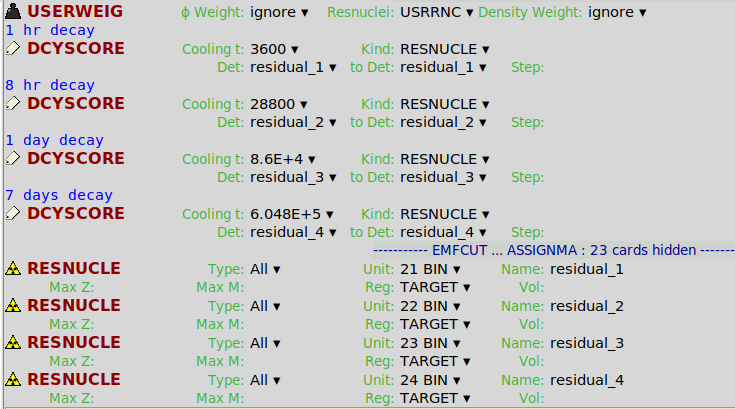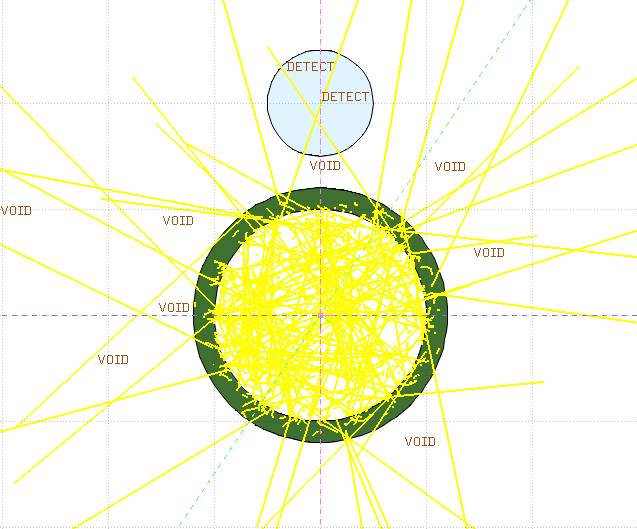Dear @riya,
May I know how you have visualized the above image ?
This is a USERDUMP, take a look to the manual for details on how to use it. Its output can be visualized using the geometry tab of Flair in a similar way as an USRBIN, simply adding a Userdump instead of it.
Either the inner photons are from all the radionuclides produced after neutron activation which emit gammas (since I have not used MAT-PROP in the inner void, there no filtering is acting).
No, all photons are created in the target, so you do not need to filter anything in your void regions. They are all already affected by your filtering in the target material. This you can test very easily, set the weight of all photons to zero in your usrmed.f routine and keep only the MAT-PROP card for your target, then run your simulation and try to score photons (with USRBIN for instance). You will find out that you cannot, because you have killed all your photons.
Or, the target is not uniformly irradiated by neutrons, the irradiation is more in the inner portion and less in the outside ???
This you can find out by scoring neutron fluence using a USRBIN, in fact I would recommend you to always do so to cross-check your sources. But it is perfectly normal that you have more photons (and neutrons) inside the void region in your target. Your neutrons have very low energy so they will interact very easily with your material as soon as they go inside it, either to be captured or to scatter, likely back to your inner void, finding again your target on the other side of it. As result you have a higher neutron fluence in the inner parts of your U than in the outer. Therefore your photons will be more likely to be produced in the inner side of your U. Also, if they are emitted towards inside your target, they may scatter at the other side, maybe coming back inside (so one photon may be producing more than one line in Andre’s picture), while those that go outside never come back. This is why you see a higher track density in the inner void than in the outer.
suppose I want to employ MAT-PROP in the inside void, not the outside void. Is there any way to do it ?
As mentioned, you do not need to do so, but the easiest would be to discriminate between the different regions using the region number provided in the routine, which can be used to obtain the region name.
Hope this helps,
Francisco



